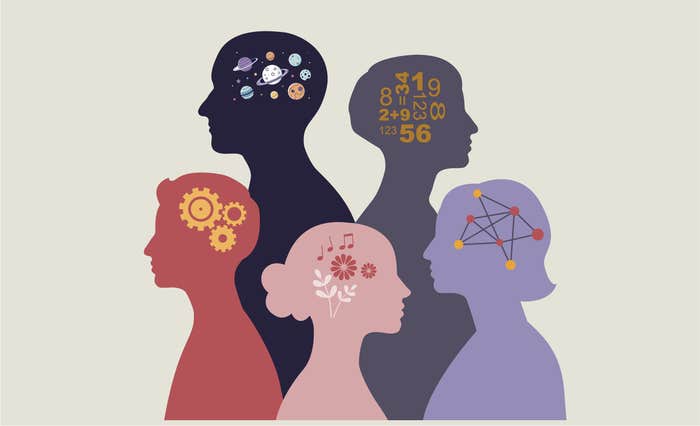Little Lewis, my son, I see some evidence that you have the ability to learn science, number and proportions, and I recognize your special desire to learn about the astrolabe…
— Chaucer’s Astrolabe Treatise, 1391.
At what point did we create an artificial intelligence? Was it when we first chiseled on rocks the memory of our debts? Was it that point when we enhanced reasoning by exploring possibilities in the arena of a game? Or when we solved a problem of inference beyond our merely fleshy ability to calculate? The dream of a fully autonomous artificial intelligence, stuff of infinite science-fiction prognostication, has blinded us to the incremental nature of artificial intelligence. The deep intellectual and ethical question facing our species is not how we’ll prevent an artificial superintelligence from harming us, but how we will reckon with our hybrid nature.
This dual nature of ours has been evident for centuries. In the 14th century, Chaucer, author of The Canterbury Tales, prepared a treatise for his son in which he set out in meticulous detail the operations of an astronomical machine—the astrolabe—designed to assist in the identification of planets and stars and provide a calendar of their motions. The astrolabe was in effect an artificial astronomer, a mechanical expert that mariners carried on voyages in lieu of libraries, charts, and mathematicians.
The astrolabe captures three properties essential to what Donald Norman, the director of the Design Lab at the University of California, San Diego, has described as “cognitive artifacts”—a store of memory, a mechanism for search, and an instrument of calculation. The use of physical objects and machines as “amplifiers” or “trainers” of cognition has, in fact, a long and celebrated history. In her magisterial study of memory in antiquity, The Art of Memory, Frances Yates describes the tale of Simonides of Ceos who once used the positions of seats around a table to recall the identities of a dinner party crushed by a falling roof. Yates dispassionately concludes, “Orderly arrangement is essential for good memory.”
Orderly arrangements need not be purely physical—acronyms, rhymes, and imagery are all methods for expanding recall. As David Rubin observes in his monograph, Memory in Oral Traditions, “In Homer, the sea is always wine dark, the dawn, rosy fingered.” And when the material is too vast to memorize, we rely on lists, indices, bibliographies, catalogs, etymologies, bestiaries, dictionaries, encyclopedias, concordances, and guide books—a whole “Gutenberg galaxy” as it were, of stored information.
Mechanisms of search represent another level of sophistication beyond memory. A chessboard, for instance, is a virtual search engine—it not only encodes through an outsourced working memory the positions of pieces; the 64 elements of the grid also provide a mental scaffold for plotting out possible futures. But strategic maps are perhaps the best understood ancient search engines for constructing tactical sorties in the field of battle. Napoleon, considered by many historians one of Europe’s greatest military strategists, made extensive use of maps to arrive at new troop formations. Napoleon’s strategy of the “central position” was topographically conceived in order to defeat detachments of enemy forces. So important were Napoleon’s combinatorial innovations that, for many years, students at West Point were required to learn French in order to experience his insights firsthand.
Calculation, though, is perhaps the omega-point property of cognitive artifacts. Mathematical tools from the tally stick to arithmetic rope, the protractor to the compass, and the slide rule to the abacus, all enhance our unassisted aptitude for calculation. By engineering precise constraints, each of these machines can, like the astrolabe, ensure that through a sequence of stereotyped actions (an algorithm), we arrive at the correct answer to a simple question. And computers—from the analytical engine to the differential analyzer, through to our contemporary zoo of digital universal Turing machines—provide the essentially ambient analytical matrix of modern society.
In every one of these cases an artificial element has been introduced to our intelligence. They’re certainly amplifiers, but in many cases they’re much, much more. They’re also teachers and coaches. In almost every use of an ancient cognitive artifact, after repeated practice and training, the artifact itself could be set aside and its mental simulacrum deployed in its place.
In every one of these cases an artificial element has been introduced to our intelligence.
I call these machines complementary cognitive artifacts. Expert users of the abacus are not users of the physical abacus—they use a mental model in their brain. And expert users of slide rules can cast the ruler aside having internalized its mechanics. Cartographers memorize maps, and Edwin Hutchins has shown us how expert navigators form near symbiotic relationships with their analog instruments.
So our upper Paleolithic lineage has always possessed artificial intelligence to the extent our ancestors have been aided in this way. In modern life, mobile devices and their apps—to-do apps, calendar apps, journaling apps, astronomy apps, game apps, social apps, and on near infinitum—just recapitulate the three essential elements of the astrolabe: memory, search, and calculation.
Compare these complementary cognitive artifacts to competitive cognitive artifacts like the mechanical calculator, the global positioning systems in our cars and phones, and machine learning systems powering our App ecosystem. In each of these examples our effective intelligence is amplified, but not in the way of complementary artifacts. In the case of competitive artifacts, when we are deprived of their use, we are no better than when we started. They are not coaches and teachers—they are serfs. We have created an artificial serf economy where incremental and competitive artificial intelligence both amplifies our productivity and threatens to diminish organic and complementary artificial intelligence, and the ethics of this sort of mechanical labor are only now engaging the attention of practitioners and policy makers.
We are in the middle of a battle of artificial intelligences. It is not HAL, an autonomous intelligence and a perfected mind, that I fear but an aggressive App, imperfect and partial, that diminishes autonomy. It is prosthetic integration with the latter—as in the case of a GPS App that assumes the role of the navigational sense, or a health tracker that takes over decision-making when it comes to choosing items from a menu—that concerns me. The writer William Gibson has said that the future is here—it’s just not evenly distributed. But the future, in the form of aggressive Apps, is nearly everywhere.
It is not HAL, an autonomous intelligence and a perfected mind, that I fear but an aggressive App.
In Homer’s The Odyssey, Odysseus’ ship finds shelter from a storm on the land of the lotus eaters. Some crew members go ashore and eat the honey-sweet lotus, “which was so delicious that those left off caring about home, and did not even want to go back and say what happened to them.” Although the crewmen wept bitterly, Odysseus reports, “I forced them back to the ships…Then I told the rest to go on board at once, lest any of them should taste of the lotus and leave off wanting to get home.”
In our own times, it is the seductive taste of the algorithmic recommender system that saps our ability to explore options and exercise judgment. If we don’t exercise the wise counsel of Odysseus, our future won’t be the dystopia of Terminator but the pathetic death of the Lotus Eaters.
We must ask: What kind of artificial intelligence do we wish to become?
David Krakauer is President of the Santa Fe Institute and William H. Miller Professor of Complex Systems.
The lead photograph is courtesy of Ars Electronica via Flickr.


























